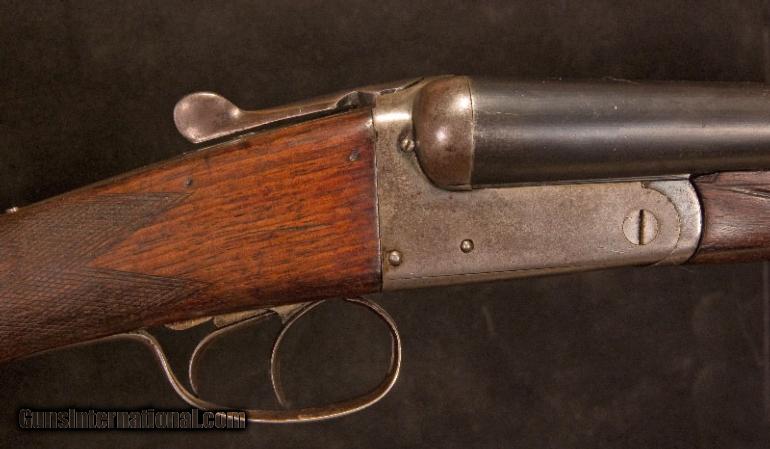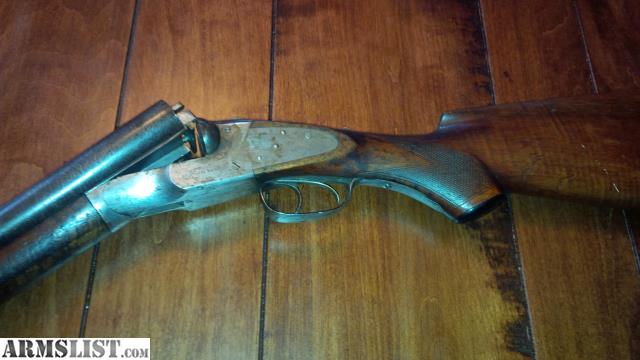I have 12 GAUGE PARKER DOUBLE BARREL SHOTGUN WITH HAMMERS. IT HAS A SERIAL NUMBER OF 2921. Barker and images may be seen. In 1867 Baker is in Lisle, N.Y. Making muzzle loaders, conversions, two and three barreled breechloaders, all of which were marked W. Baker until 1877. The firearm that reigned supreme during this time however was the side by side double barrel shotgun. The major brands of SxS shotguns being produced here in the USA during this period of time were Parker, L.C. Smith, Lefever, Ithaca, Fox, Remington, and Baker.
Baker Shotgun Serial Number Database
BBAKER GUN & FORGING CO.
Choose your Firearm


By Photos
By Model
M1894, was the first hammerless, made in 10, 12, & 16 gauges. Could have been had in 'ordnance or damascus steel barrels. This model has a Purdey forend fastener (push button type)
M1900, hammerless, made in 12 & 16 gauges. Could have been had in 'ordnance or damascus steel barrels. This model has the snap on Baker type forend fastener.

The 1894 was more of a precision fit gun & could be had as an engraved version. The 1900 was basically an 'economy' version of the 1894.
Before 1906 both the 1894 & 1900 models had the firing pin made integral on the hammers. Around 1906 Remington made the change to the floating firing pin on both guns. It was a running change so there is no exact serial number.
The best way to tell the two model's apart is by the serial numbers. The model 1894 serial number's start with a (1) and the model 1900 serial number's start with a (3). All have 6 number's in the serial number. So if the serial number start's with a (3) it is a model 1900. Also on the 1894 especially on later gun's sometimes there is a 'P' ahead of the serial number, The 'P' signifies the 1894. On the 1900 sometimes there is a 'Q' ahead of the serial number, the 'Q' signifies the model 1900.
As far as the receiver parts go about the only difference is fit and finish between the 1894 and the 1900.
Another difference is the 1894 has a Purdey forend fastener (push button) and the 1900 has the snap on Baker type forend fastener.
Gun's with flat ribs will be earlier guns, & will usually have the firing pin's as part of the hammer. Also, if either the 1894 or 1900 model has a concave rib (not flat) and /or one screw in the trigger guard (not two) and /or a concave safety it will almost always have the floating firing pin's. The changes to the floating firing pin was around 1906.
Also on both models the 1894 and 1900, there is the 1894 patent date on the forend iron.
For the model 1900, they did away with the point on top of the buttplate and went to a cheaper straighter buttplate.
I have collected Remington model 1894 and 1900 double for over 40 years. I also do repair and restoration on them. Thanks for allowing me to explain.
Old Double Barrel Shotgun Manufacturers

Baker Double Barrel Shotgun
| MODEL | SERIAL NUMBER | YEARS |
| 1873 | 1-5600 | 1873-1878 |
| 1876 | 1-5900 | 1876-1882 |
| 1878 | 1-2200 | 1878-1882 |
| 1882 | 1000 - 2000 | 1882-1887 |
| 1883 | 14,000 - 16,000 | 1883-1884 |
| 1885/87 | 17,000 - 24,000 | 1885/87-1889 |
| 1889 | 24,000 - 265,000 (skipped most of 100,000 series) | 1889-1900 |
| 1894 | 100,000 - 140,700 | 1894-1910 |
| 1900 | 300,000 - 395,000 | 1900-1910 |